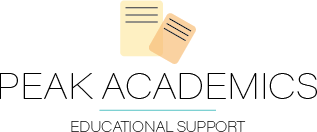Writing - especially when creative and expressive - is a powerful tool not only for children’s academic growth, but also self-discovery and emotional growth. Journaling and storytelling can provide a sanctuary for their developing inner world to unfold in a way that feels both safe and enjoyable: to explore, process, organize, and sometimes even share. Long-term success in school and life requires the ability to think critically, communicate effectively, and understand oneself. Creative writing is a highly effective avenue to strengthening each of those aptitudes, while also reducing stress, improving memory, and encouraging innovation.
BENEFIT #1: EMOTIONAL LITERACY AND REGULATION
Turning the abstract world of complex feelings into structured language through the act of journaling is a profound exercise in emotional intelligence. By externalizing their emotional landscape, young writers can find distance and clarity on the written page. Research extensively reports on these benefits, linking creativity to “emotional regulation, cognitive flexibility, and social connectedness.”
Self-expression through writing, particularly on a regular basis, supports emotional regulation by providing a consistent, private channel for processing stress, frustration, and personal victories. As a therapeutic tool, this remains true for people of any age and even in extreme cases, such as for those who suffer with PTSD or long-term chronic illnesses. This internal processing system is invaluable for maintaining mental well-being and managing the pressures that naturally arise in the academic environment and life in general.
Physical and emotional health are inextricably linked, and expressive writing invariably supports both. According to a 2018 study published by the Cambridge University Press, these benefits include long-term health outcomes such as:
Fewer stress-related visits to the doctor
Improved immune system functioning
Reduced blood pressure
Improve lung function
Improved liver function
Improved moods/affect
Feelings of great psychology well-being
Reduced depressive symptoms
Fewer avoid symptoms
BENEFIT #2: ORGANIZATIONAL AND EXECUTIVE FUNCTIONING SKILLS
Creative writing and storytelling both inherently require the writer to employ and develop critical executive functions, such as organization, planning, and memory. Inventing characters, structuring plot outlines, or even simply maintaining a daily journal necessitates on-going planning, sequential organization of ideas, and sustained attention. When a child practices these essential skills of ideation (generating content), arrangement (paragraph and narrative flow), and revision (self-correction and refinement), they are strengthening their capacity for applying those abilities in other contexts - also known as transfer. For instance, writing expressively can allow students to gain valuable experience in initiating a task, planning its execution, and self-monitoring their progress. Then, they can transfer those improved skills to complex school projects, studying for exams, and maintaining the organizational habits necessary for long-term academic achievement.
In the earlier mentioned 2018 study published by the Cambridge University Press, some of the social and behavioral benefits include outcomes such as:
Higher GPA
Reduced absenteeism
Improved working memory
Improved sporting performance
Altered social and linguistic behaviors
BENEFIT #3: SELF-ASSURANCE AND AUTHENTIC VOICE
Poetry, creative fiction, and personal reflection all grant young writers the freedom to experiment and explore their identities without external judgment. This safety encourages authenticity, allowing them to solidify their unique values and perspectives on the world around them and the world within. Students can find their most authentic voices in this private space, and then develop the confidence and clarity they need to advocate for their ideas and present effective arguments in formal assignments or interpersonal contexts. The self-assurance gained from knowing and articulating an inner narrative translates into greater resilience and a powerful, unique voice in academic papers and public discourse.
In another study published by Secker et al. (2017), engaging in creative processes yielded distinctly invaluable internal benefits:
Improved problem-solving
A positive sense of identity
Greater confidence
Greater self-esteem
A sense of agency and control over their mental health
Capacity for self-expression
CONCLUSION
Prioritizing expressive writing as part of a child’s routine is a worthwhile investment in their holistic development, extending far beyond the requirements of a traditional school curriculum. By providing opportunities and encouragement for journaling and creative storytelling, parents and educators can offer young students the tools they need to successfully navigate the demands of education, as well as the complexities of both their external and internal worlds. A written pathway to self-expression is potentially one of the most valuable and yet simple ways we can ensure a child discovers and learns to leverage their completely authentic and articulate voices in the world around them.
Written by Brandi R.





